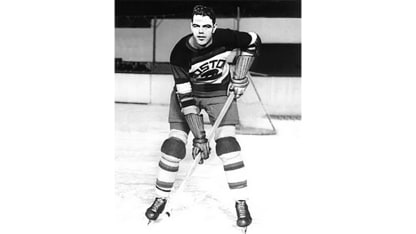"We finished first in the American Division, beating out the Rangers by five points. Because we finished on top, we only had to play two playoff rounds whereas the Rangers, who finished second, had to play three rounds. We beat the Canadiens three straight while the Rangers wound up beating the New York Americans and Toronto. It was interesting to play them because they were the defending Cup champions and, of course, I had broken in with them the previous fall before being traded. We opened at Boston Garden, got a couple of goals in the second period and beat New York 2-0. The second game was at Madison Square Garden and it was tied 1-1 until late in the third period when we got a goal from Bill Carson and won the Cup by a 2-1 score. The irony is that Carson had been, like me, a student-athlete who had been studying dentistry while playing for the Bruins. I eventually retired to become a lawyer and Bill retired from the NHL to become a dentist up in Canada."

